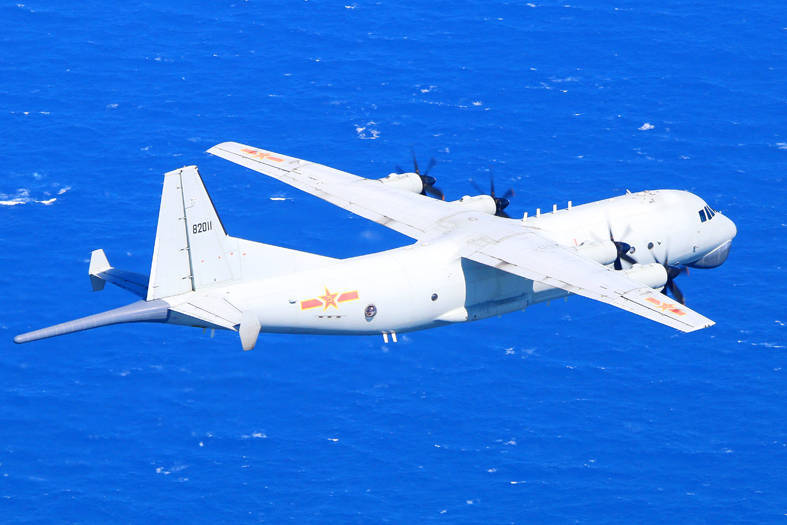《TAIPEI TIMES》 Ministry responds to PRC incursions

A Chinese military plane is pictured in a photograph released by the Ministry of National Defense on Monday. Photo courtesy of the Ministry of National Defense
By Jonathan Chin / Staff writer, with CNA
The military tracked Chinese warplanes and responded as they encroached on Taiwan’s air defense identification zone (ADIZ) twice in the past four days, the Ministry of National Defense said yesterday.
Chinese fighter jets and bombers encroached on the nation’s ADIZ on Saturday last week and again on Monday, the ministry said.
On Monday, 10 aircraft — four J-16 multirole fighters, four J-10 multirole fighters, a KJ-500 airborne early warning and control aircraft and a Y-8 marine patrol aircraft — simultaneously approached Taiwan’s southwestern ADIZ from opposite directions before turning back, it said.
The Japanese Ministry of Defense said that it also identified two Y-9 aircraft — one configured for reconnaissance and the other for electronic warfare — to Taiwan’s east.
Ministry spokesman Major General Shih Shun-wen (史順文) at a news conference said that the military successfully monitored the aircraft, and responded appropriately and effectively.
The military’s reaction to Chinese encroachment is determined by regulations on strategic and operational readiness, he said.
As a general principle, the military overestimates enemy capabilities, and generates a response that can anticipate and potentially block multiple, simultaneous hostile moves, Shih said.
The military avoids the “attrition trap” by varying its incursion responses by using a “high-low mix” of jets, slower aircraft, air-defense missile systems and electronic warfare, Air Force Chief of Staff Lieutenant General Huang Chih-wei (黃志偉) said.
Regarding the Japanese defense ministry’s statement, Huang said that each nation has its own criteria for disclosing defense information, but added that all threats to Taiwan were successfully monitored that day.
Association of Strategic Foresight research fellow Chieh Chung (揭仲) said that the incursions were Beijing’s way of showing its displeasure with the US, not immediate military threats.
Recent activity has been consistent with Beijing’s pattern of conducting a high-profile show of force when there is a development in US-China or Taiwan-US ties that it does not like, he said.
The Chinese aircraft were reportedly flying toward one another, but not conducting highly threatening maneuvers when circling Taiwan from opposite directions, he said, citing publicly available information.
On May 11, 2018, three formations of Chinese aircraft circled Taiwan in the north, east and south, with the nearest observed aircraft only 56km from the naval base in Yilan County’s Suao Township (蘇澳), he said.
Two of the formations flew toward each other to encircle Taiwan’s eastern ADIZ, between the Bashi Channel and the Miyako Strait.
Two H-6K bombers, one Y-8 electronic warfare aircraft and one Tu-154 electronic warfare aircraft comprised the northbound group, while two H-6K bombers comprised the southbound one, he said.
The aircraft flew around Taiwan’s eastern airspace seven times from mid-April to late May 2018, Chieh said.
The military activity was a response to then-premier William Lai (賴清德) — now vice president — publicly describing himself as “a political worker for Taiwanese independence,” he said.
新聞來源:TAIPEI TIMES













